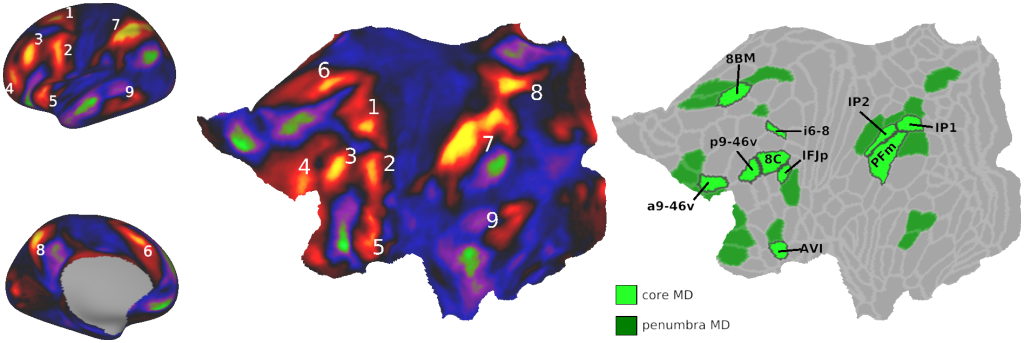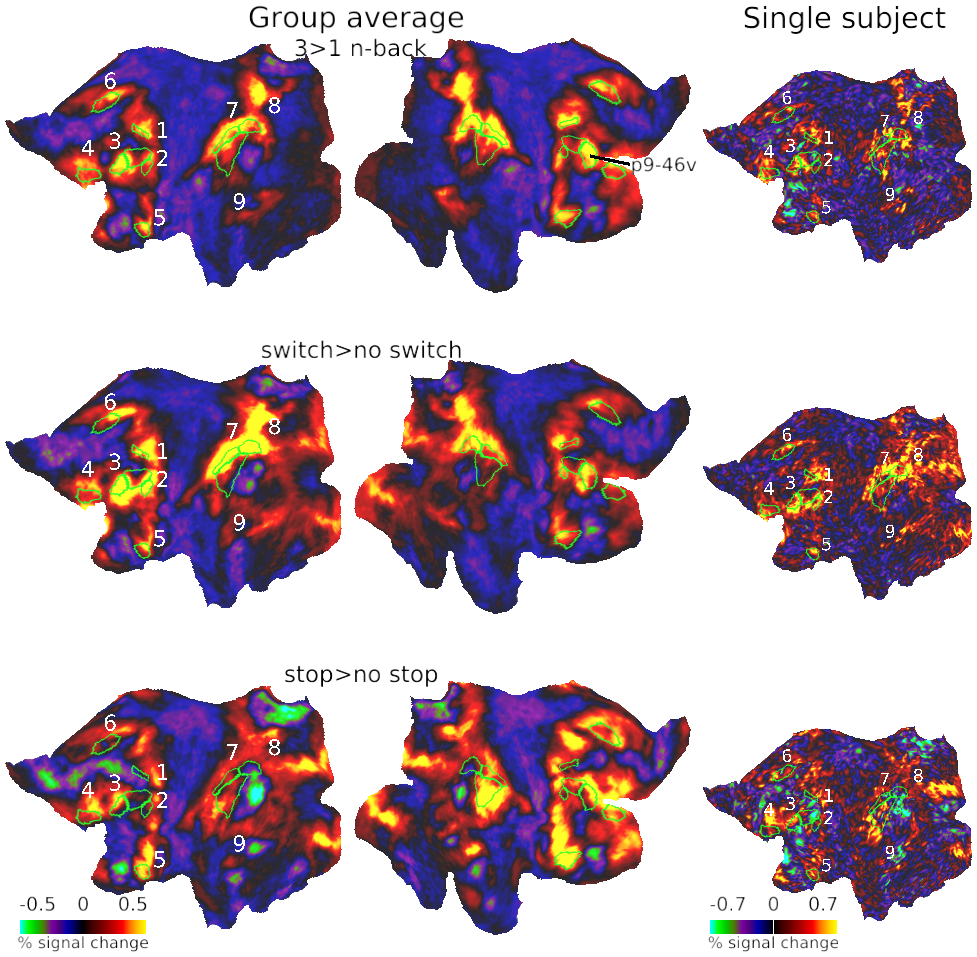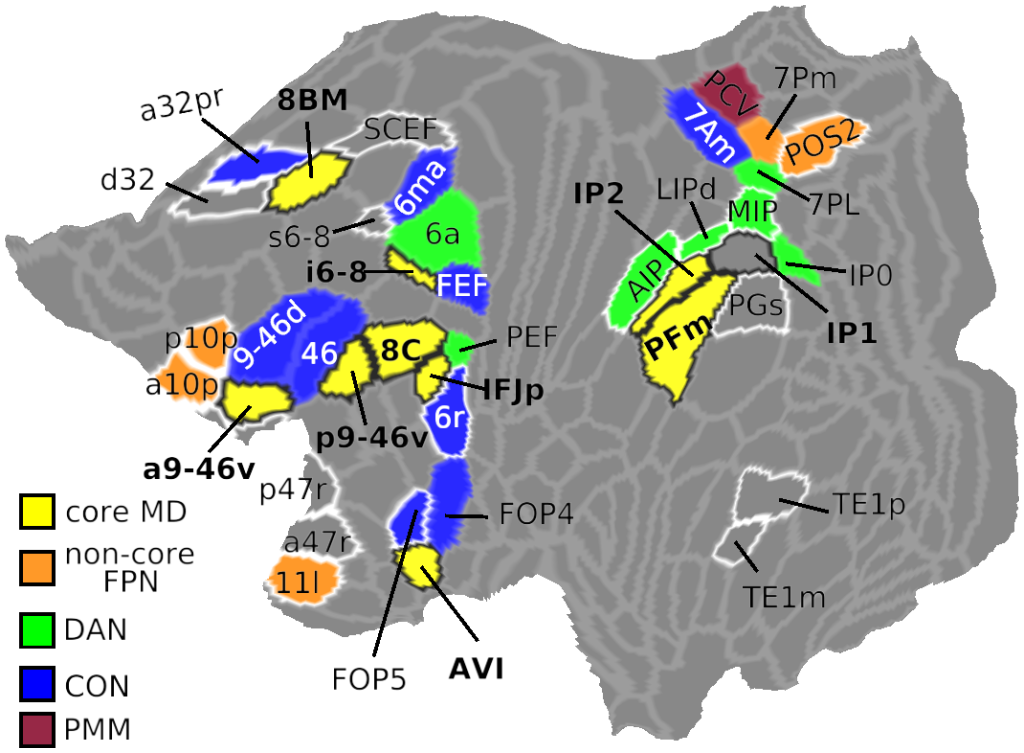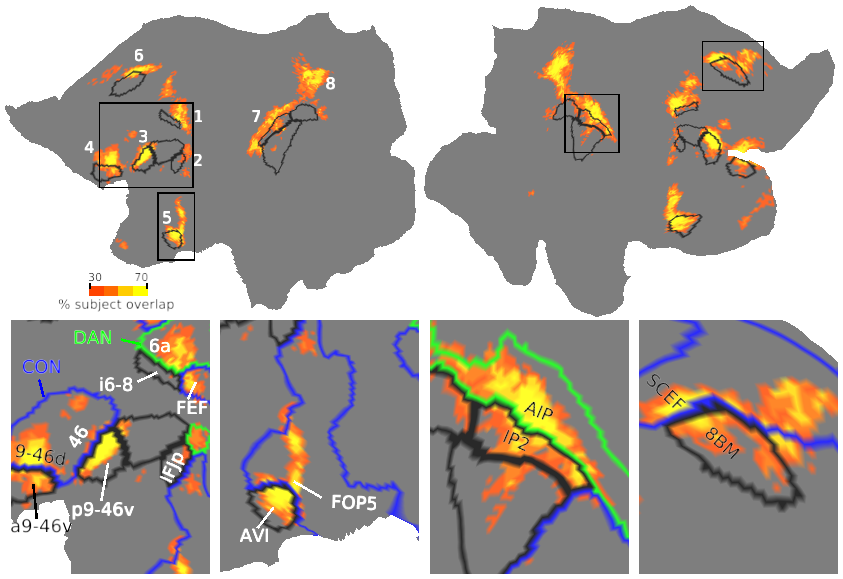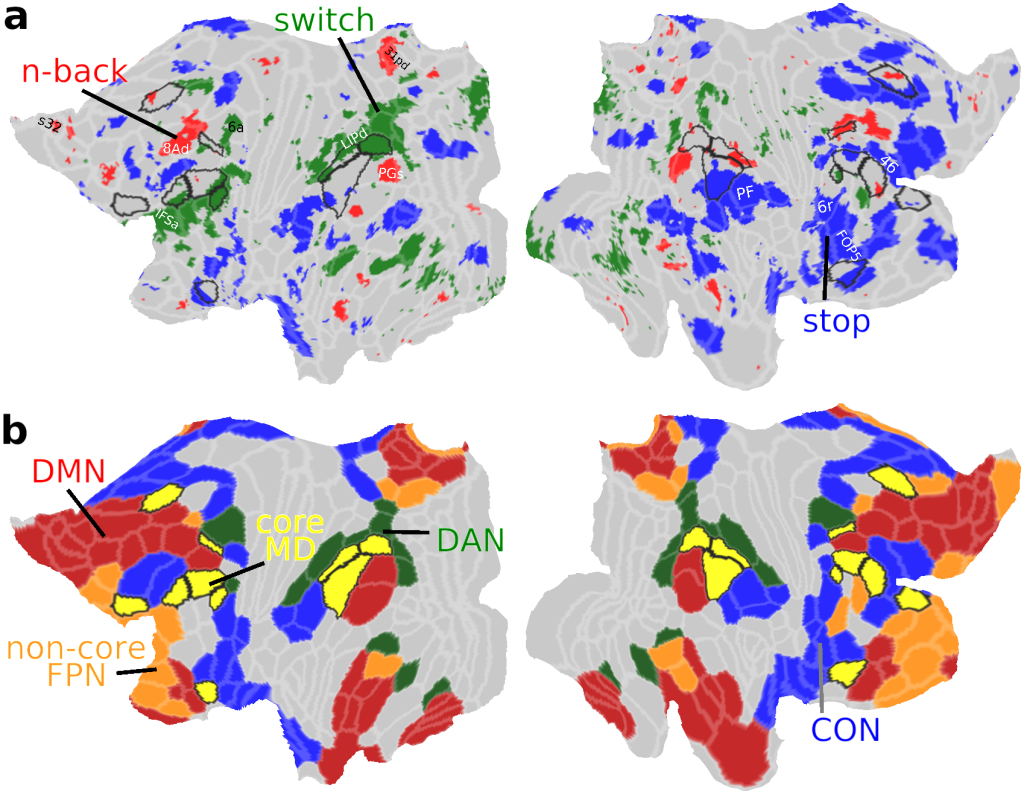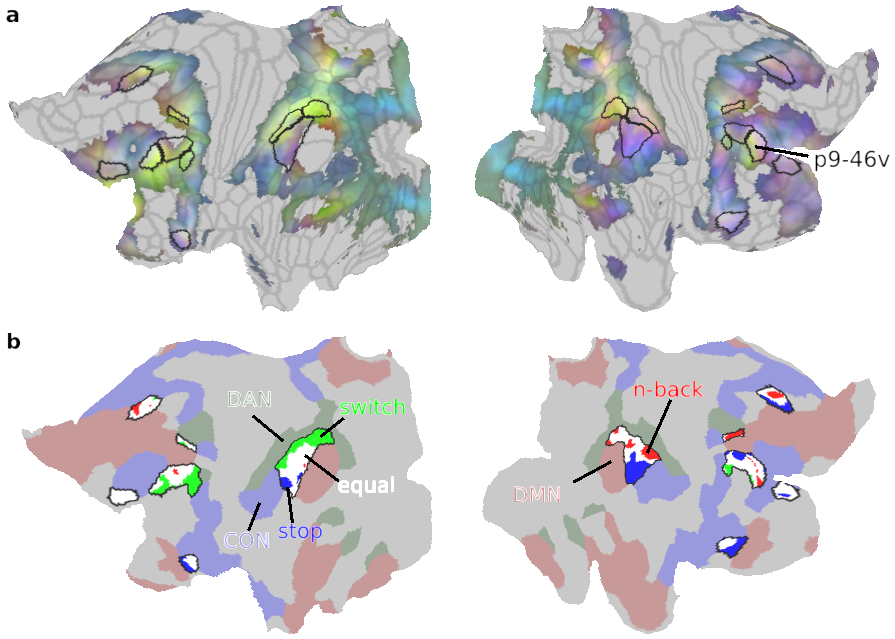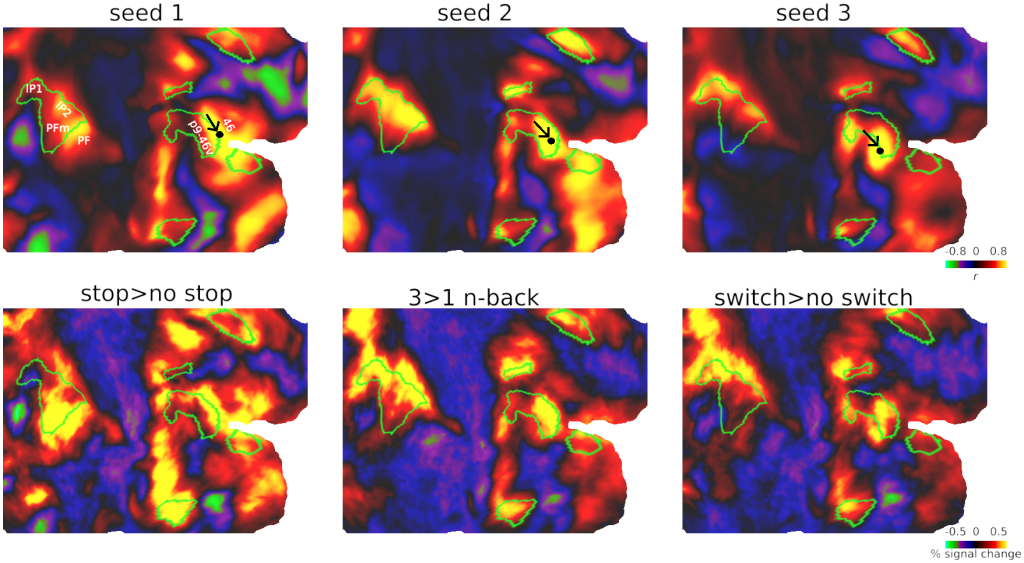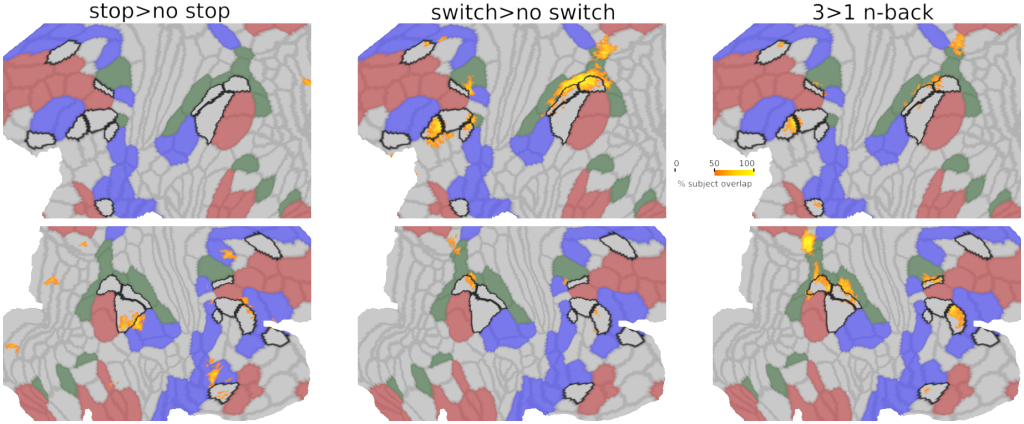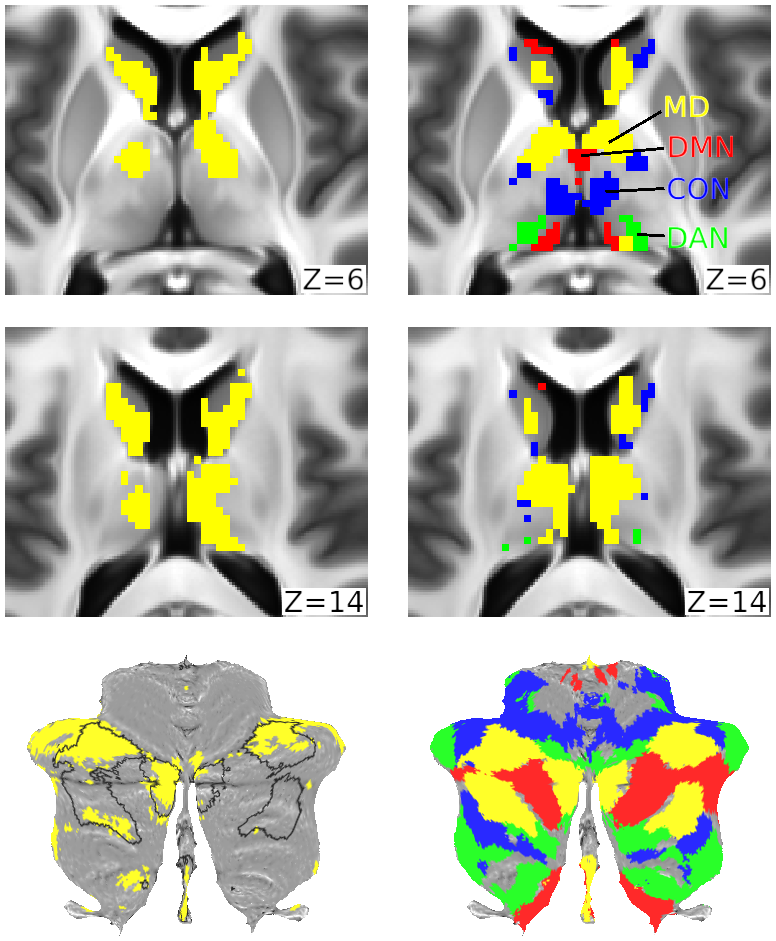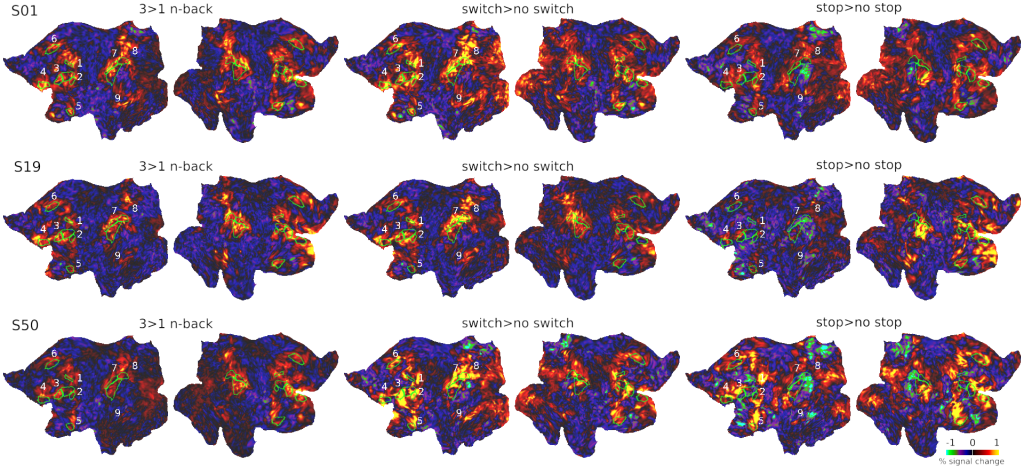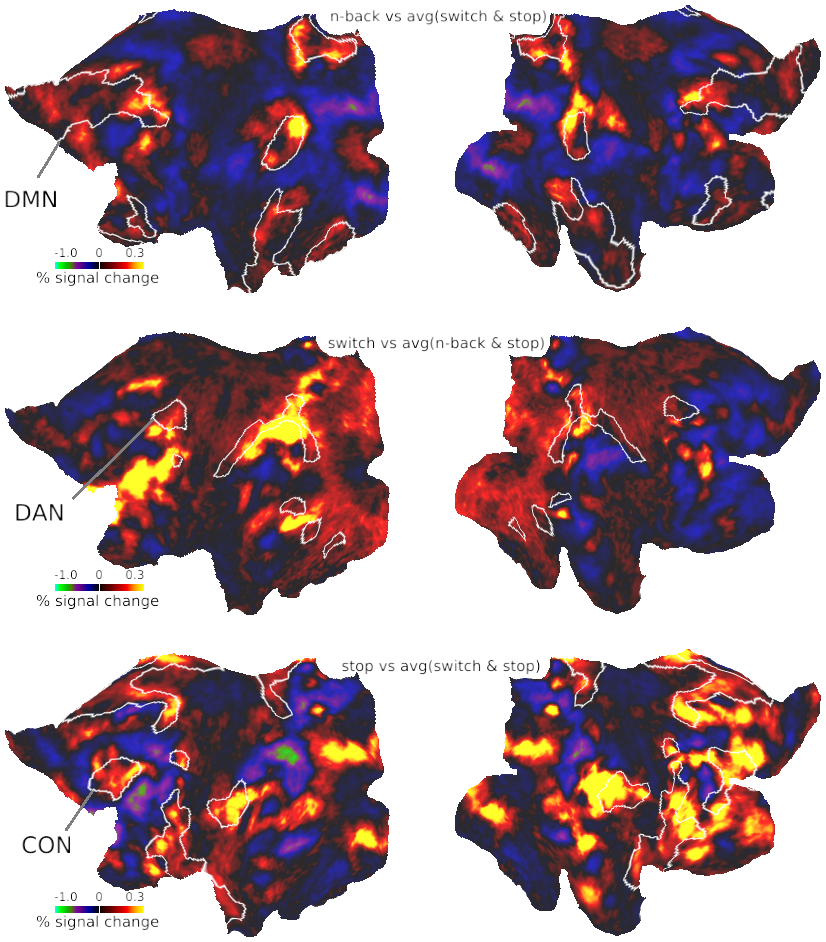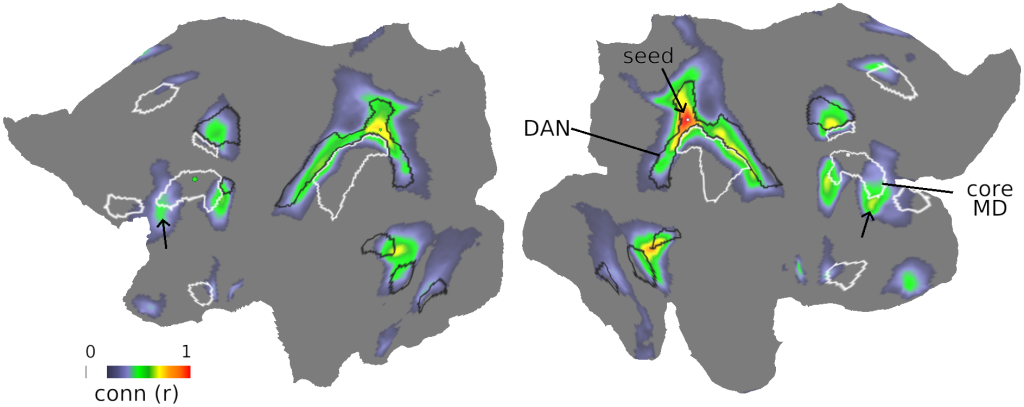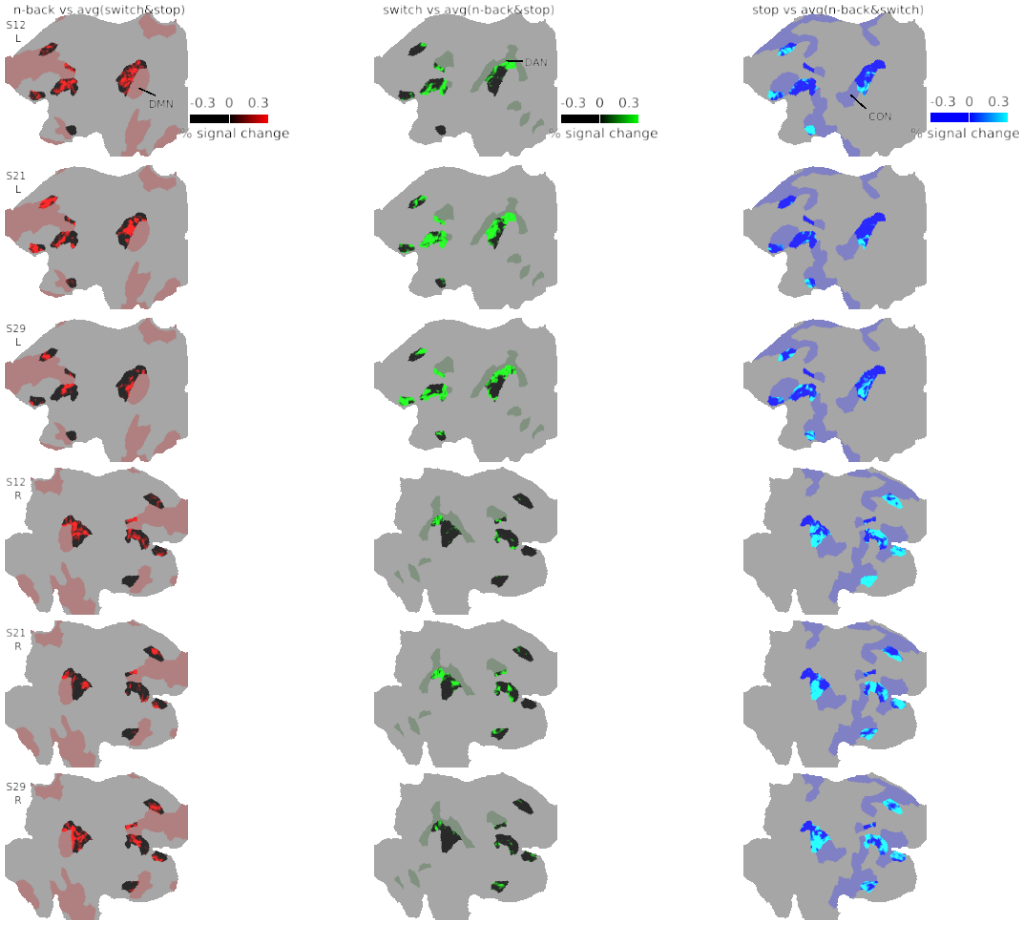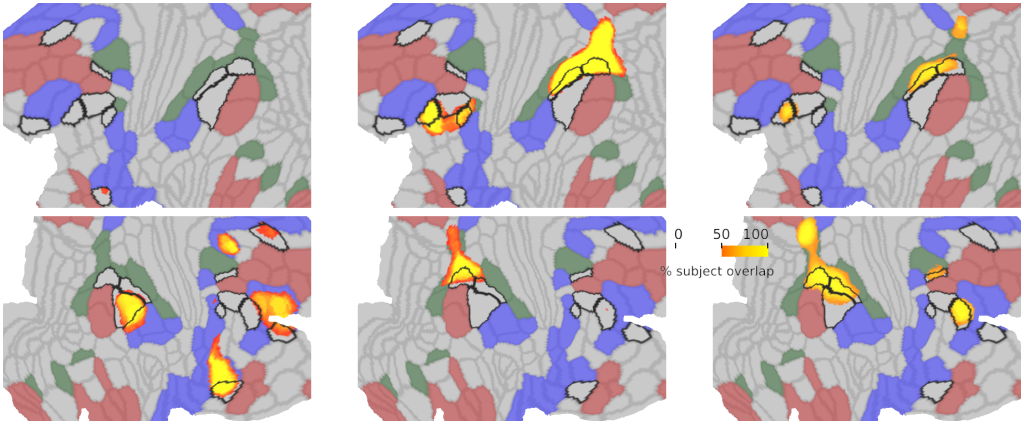FULL TITLE:
Basis of executive functions in fine-grained architecture of cortical and subcortical human brain networks
SPECIES:
Human
ABSTRACT:
Theoretical models suggest that executive functions rely on both domain-general and domain-specific processes. Supporting this view, prior brain imaging studies have revealed that executive activations converge and diverge within broadly characterized brain networks. However, the lack of precise anatomical mappings has impeded our understanding of the interplay between domain-general and domain-specific processes. To address this challenge, we used the high-resolution multimodal MRI approach of the Human Connectome Project to scan participants performing three canonical executive tasks: n-back, rule switching, and stop signal. The results reveal that, at the individual level, different executive activations converge within 9 domain-general territories distributed in frontal, parietal and temporal cortices. Each task exhibits a unique topography characterized by finely detailed activation gradients within domain-general territory shifted towards adjacent resting-state networks; n-back activations shift towards the default mode, rule switching towards dorsal attention and stop signal towards cingulo-opercular networks. Importantly, the strongest activations arise at multimodal neurobiological definitions of network borders. Matching results are seen in circumscribed regions of the caudate nucleus, thalamus and cerebellum. The shifting peaks of local gradients at the intersection of task-specific networks provide a novel mechanistic insight into how partially-specialised networks interact with neighbouring domain-general territories to generate distinct executive functions.
PUBLICATION:
BioRxiv
- DOI:
10.1101/2022.12.01.518720
- Assem, Moataz
- Shashidhara, Sneha
- Glasser, Matthew F.
- Duncan, John
- University of Cambridge
- Ashoka University
- Washington University in St. Louis

